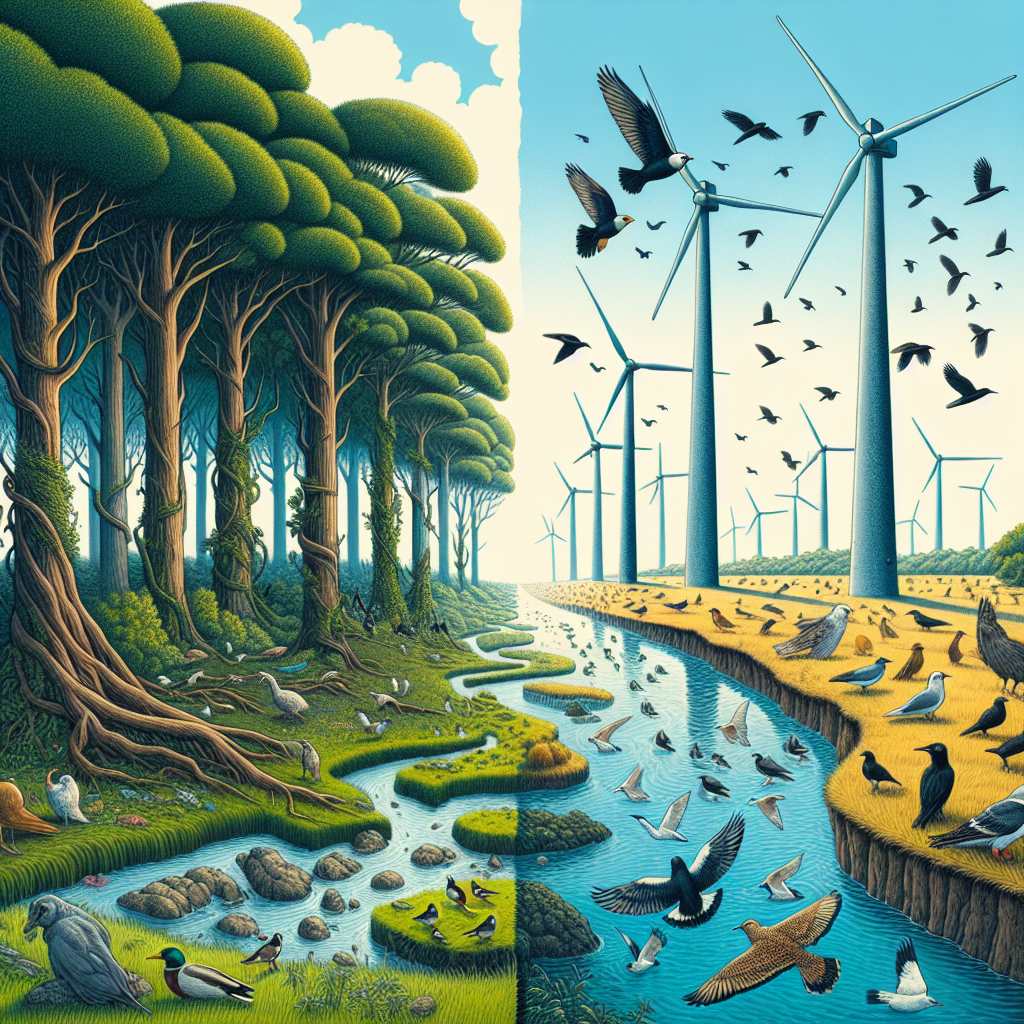
As concerns about the decline in bird numbers mount, scientists are shedding light on the unintended consequences of the development of renewable energy. The expansion of wind and solar energy facilities is inadvertently leading to bird mortality, prompting experts to explore new analytical approaches to better understand and address the threats faced by avian species.
Hannah Vander Zanden, an assistant professor of biology at the University of Florida, warns, “Bird mortality has become an unintended consequence of renewable energy development.” The hazards for birds at these facilities include collisions with wind turbines, collisions with solar panels that resemble water, and exposure to intense heat from concentrating solar power plants. Although the death rate is lower compared to other causes like household cats and building collisions, scientists stress the importance of mitigating this problem.
In an effort to understand the impact of solar energy on birds, Vander Zanden and her colleagues employed geospatial analyses using stable hydrogen isotope data obtained from the feathers of 871 individual birds found dead at solar and wind energy facilities in California, representing 24 species. By analyzing natural-occurring markers in the feathers, they could determine the geographic origin of the birds based on the water they consumed.
The results, published in the journal Conservation Biology, reveal that birds killed at these facilities come from a broad area across the continent, with varied geographical origins among species. The study found that most birds killed at solar facilities were nonlocal, with peak mortality occurring during migratory periods in April and September through October. At wind facilities, the percentage of migratory birds almost equaled that of local birds, at 51%.
To address this issue and minimize fatalities, the researchers emphasize the need to identify the geographic origin of affected birds. Vander Zanden suggests that such data can inform strategies to minimize or mitigate fatalities. For example, facility management could collaborate with conservationists to enhance local habitats, protect indigenous bird species, or improve other parts of the species’ range to aid migratory birds.
The study also underscores the value of stable isotope data in assessing future bird population growth or decline patterns due to various factors. Vander Zanden notes that studying the remains of animals provides a noninvasive approach to gather information that is otherwise challenging to track and apply to conservation efforts. As the world transitions towards renewable energy, addressing the unintended consequences on wildlife becomes crucial.

